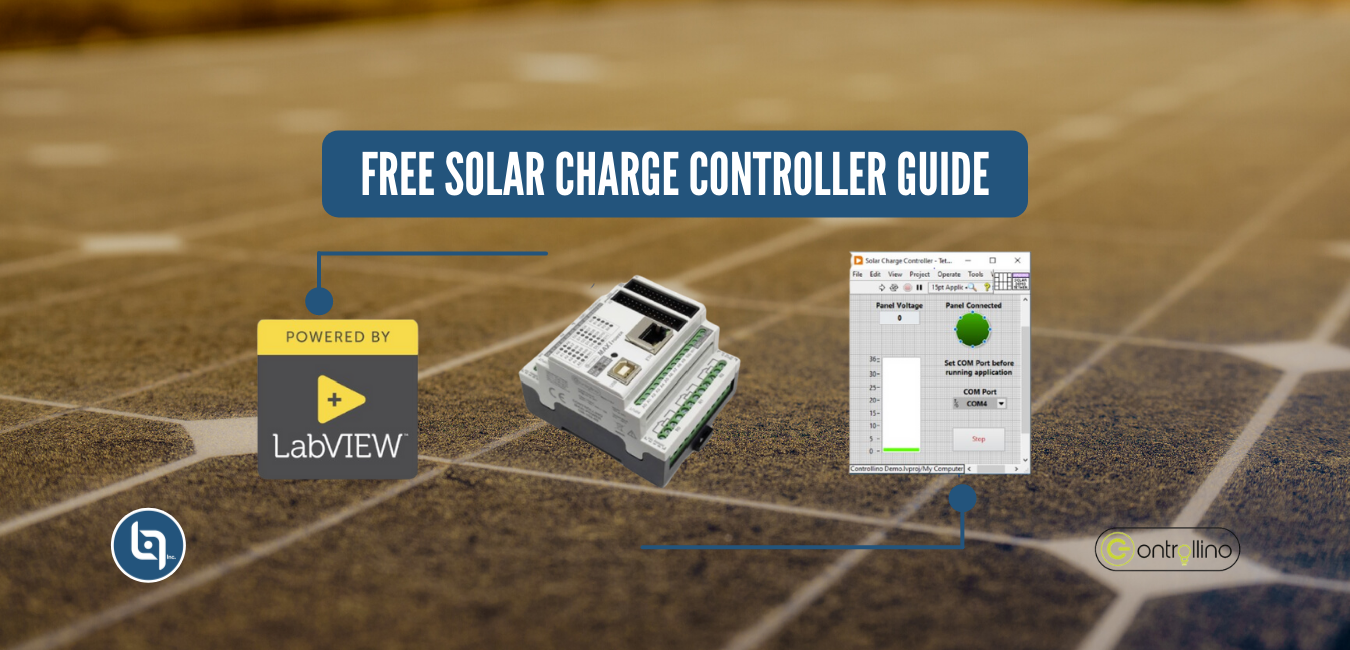A solar charge controller, also known as a charge regulator, is a voltage and/or current regulator that prevents batteries from becoming overcharged. It regulates the voltage and current going to the battery from the solar panels. Because most “12 volts” panels produce around 16 to 20 volts, the batteries will be harmed by overcharging if there is no regulation. To reach full charge, most batteries require between 14 and 14.5 volts.
At the bottom of this blog, a link to the FREE Arduino Application is attached.
Choosing the right PLC
PLC or Programmable Logic Controller (PLC) is an electronic device mostly used in industrial automation. A PLC controls the logic function of machines, plants, and industrial processes. At the same time, PLCs receive digital signals and analogic signals, thus strategies of control can be applied.

Controllino Industrial PLC
Controllino has become one of the most popular industrial PLCs due to the numerous features that distinguish the variants. Some features include the use of ATmega328 and Atmega2560 microcontrollers (MCUs). It blends the open coding freedom and nature of the Arduino ecosystem with the security and confidentiality of a PLC based on industry standards.
Logicbus is a leader company around the world that provides solutions in Automation. We recommend the Controllino Maxi as the perfect solution for this particular application.
CONTROLLINO MAXI:

Features:
- Microcontroller: ATmega2560 from Atmel, Clock Speed @ 16MHz | 100% Arduino compatible
- Multiple Interfaces: 2x serial (UART), 1x SPI, 1x I2C, 1x RS485
- Input Current: Max. 20A
- RTC: Real-time clock integreated
- Relays: 10x Relay Outputs, rated at 230V @ 6A max
- Digital Outputs: 12 Outputs, rated at 12V or 24V @ 2A max
- Analog Inputs/Outputs: 12 Inputs/Outputs
Controlling your solar panel with an industrial PLC
What is Arduino?
Arduino is an open-source electronics platform based on easy-to-use hardware and software. Arduino boards are able to read inputs – light on a sensor, a finger on a button, or a Twitter message – and turn it into an output – activating a motor, turning on an LED, publishing something online.
The amazing capabilities of our choice for industrial plc is that is compatible with ANY Arduino applications. Thus, the application of solar charge controller is ready to be applied.
FREE Arduino Application
The software and hardware package that we created isn’t a solar charge controller. This package is designed to simulate how a solar charge controller might connect and disconnect batteries based on the voltage levels received from the solar array. This is a demonstration of how Controllino may be used to construct a low-cost control system. Similar to a closed-loop control system, this software and hardware merely reads an analog input and controls a digital output.
This application demonstrates how an engineer can develop their automation control needs using Controllino and LabVIEW.
The Controllino’s code can also be written in the Arduino environment, as well as other environments that are compatible with Arduino.
When is a solar charge controller necessary?
With solar panel batteries, overcharging is an issue. Excessive current will flow into the battery once it has completed full charge as a result of a too high charge voltage. The water in the electrolyte will decompose, resulting in premature aging. A battery will gradually heat up if it is overcharged at high rates. As it heats up, it will accept more current, causing it to heat up even faster. This is known as thermal runaway, and it may completely kill a battery in just a few hours.
Overcharging a battery implies charging it beyond its rated capacity. In extreme cases, this procedure might result in leakage or irreversible damage, as well as the battery exploding. Overcharged batteries can potentially harm the devices to which they are linked. A solar charge controller is required in this circumstance to limit the change.

Is a solar charge controller right for you?
Charge controllers aren’t necessary for the vast majority of solar buyers. Solar panels on the roof or on the ground with a battery backup are almost always connected to the electric grid, and if your battery runs out, your extra solar energy will automatically redirect to the grid.
If you want to set up a small off-grid solar energy system with battery backup, you’ll need to look into getting a charge controller to make sure your battery is charged safely. When small batteries are used with solar panels that have a low output of 5-10 watts.
Get Your Free Arduino Application:
Link
sales@logicbus.com | support@logicbus.com | +1 619 616 7350 | Start conversation





